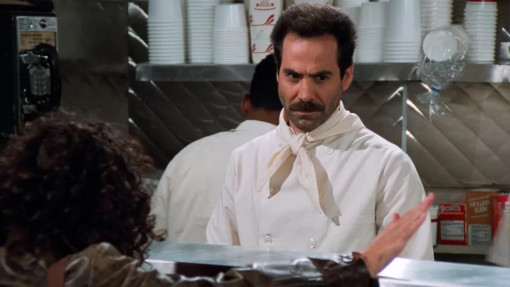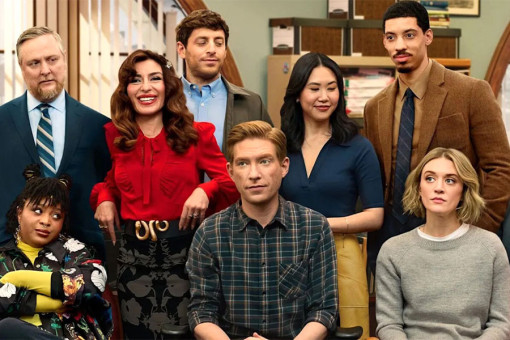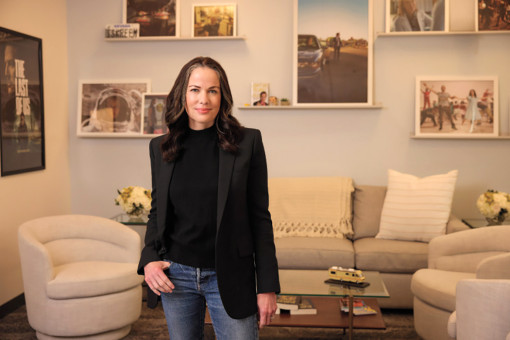Pulp Fiction put Quentin Tarantino in NBC’s ER.
After the writer-director was inundated with critical praise and awards for his Oscar-winning 1994 film, Tarantino’s love for the medical drama soon became well known among his Hollywood peers. (Appearing alongside ER’s George Clooney in the 1996 cult-fav vampire flick From Dusk Till Dawn also put the filmmaker closer to making his TV directorial debut.) It was only a matter of time before ER showrunner and executive producer John Wells and the network decided to capitalize on that fandom and give him his next directing assignment: the memorable, penultimate episode of season one, “Motherhood.”
“John calls me and he goes, ‘Hey, Tarantino wants to direct an episode,’” former NBC Entertainment president Warren Littlefield tells the Television Academy in an exclusive interview celebrating ER’s 30th anniversary. “And I was like, ‘You’re kidding me.’ John says, ‘No.’ So I was like, ‘Fantastic. Do it.’”
Written by ER supervising producer Lydia Woodward and directed by Tarantino, “Motherhood” aired on May 11, 1995, and the Mother’s Day–themed episode (viewed by 33.1 million people) explored the complicated maternal relationship that Dr. Susan Lewis (Sherry Stringfield) has with her alcoholic sister, Chloe (Kathleen Wilhoite), who is soon to give birth to Susan’s niece, Susie. “Motherhood” also features the career-focused, no-nonsense Dr. Benton’s (Eriq La Salle) discovery that his elderly mother has died.
“With everyone that season, the [producers] were kind of like, ‘We’re going to dive in [to the characters’ lives] a little bit,’” Stringfield recalls. “And that episode was one of the earliest examples of those conversations coming to be. They wanted to tease out a little bit of [the characters’] personal lives, so audiences would be like, ‘Oh, they’re not just doctors. They’re people, too, like you and me.’ And Susan’s relationship with Chloe, they definitely succeeded there. Especially with Tarantino directing.”
“It was a thrill to work with him,” Julianna Marguiles remembers. “Because oftentimes it was a really hard show to direct. And George used to say that the worst thing was when you'd see the new director for the episode come and open the script — this huge, gigantic script — and they would go [sighs]. You just knew you weren't in good hands when someone sighed so heavily like that. But with Quentin Tarantino, he had everything planned, and he wanted to be so in control of his work that he only did one take. He’d only print one take, let me put it that way, so that they couldn't edit it into what they wanted. At least, that’s what I heard.”
Aside from some of Tarantino’s usual players appearing in brief supporting roles and a patient with a Reservoir Dogs-esque severed ear (which, according to an interview Woodward gave to Entertainment Weekly in 1995, was the only “direct homage” to the filmmaker), “Motherhood” largely stands on its own and blends in well with the rest of the first season’s storytelling style. But the episode does contain two standout moments that Tarantino fans would expect to find: Dr. Lewis and her friend, Nurse Carol Hathaway (Julianna Marguiles), sunbathing barefoot on their hospital’s rooftop and then later strolling coolly down a hallway wearing sunglasses.
“That sunglasses scene was very fun to shoot,” Stringfield says. “We knew [Tarantino] was a fan of the show going in, and he came to set very, very prepared.”
“[Sherri and I] put on the sunglasses,” Marguiles adds, “and we were both like, ‘Okay, we — our characters — would never wear sunglasses like this, indoors, at work.’ But it's Quentin Tarantino. Anything's possible. He had us take off the sunglasses, and then when we saw [the walk] in slow motion, I just thought, ‘Oh my god, this is the coolest thing ever.’”
Marguiles credits Tarantino’s passion for ER contributing significantly to the episode’s success:
“He was such a fan that his energy and excitement — it was felt by the actors, and it found its way into the episode. We were working long, 18-hour days, with 25 episodes that first year. It's hard to get into a rhythm with a show that big and a cast that big and that much action going on all the time. So we were all always exhausted. But he made the day fly by, and it was really fun.”
But the fun hit a slight speed bump when filming a scene where Carol spots some pizza at the nurse’s station.
“I’ll never forget this. We were eating pizza at the big nurse’s station, at the front desk. And it was very important to Quentin that the pizza was pepperoni pizza,” Marguiles recalls. “And at the time I was a vegetarian. So I went to take a bite of the pizza and I picked the pepperoni off. And he said, ‘Cut.’ And I said, ‘What did I do?’ And he goes, ‘You have to eat the pepperoni.’ And I said, ‘Well, I'm a vegetarian.’ And he goes, ‘Uh-uh. Well, Uma ate a burger.’ He was referring to the scene in Pulp Fiction where [her character] eats a burger. And I looked at him, and he just stared at me, and I went, ‘I got you. I got you.’ Because, it was like he was saying, ‘Don’t be precious.’ There’s a reason he wanted pepperoni pizza.”
For the cut that made it to air, Marguiles did eat the slice of pepperoni pizza. “It was good,” she says with a chuckle. “I hate to admit it.”
What Marguiles has no problem admitting, however, is how memorable the experience was, working with Tarantino on the show that launched her career: “You couldn’t have asked for a better director at that time, in that period of the show’s run.”
“We were kind of the shit back then,” Littlefield says, looking back on the episode and Tarantino’s involvement in it. “The show was reaching a crazy level of popularity, and artists were eager to work on it. I mean, it was [on] the cover of Newsweek. And the first season, it was this phenomenon. And you had a cast that was brilliant, and fun to work with, and so the word kind of got out. It had a little Tarantino flare, and it was a great episode of ER.”
ER is now streaming on Hulu and Max.
See more articles celebrating ER's 30th anniversary












